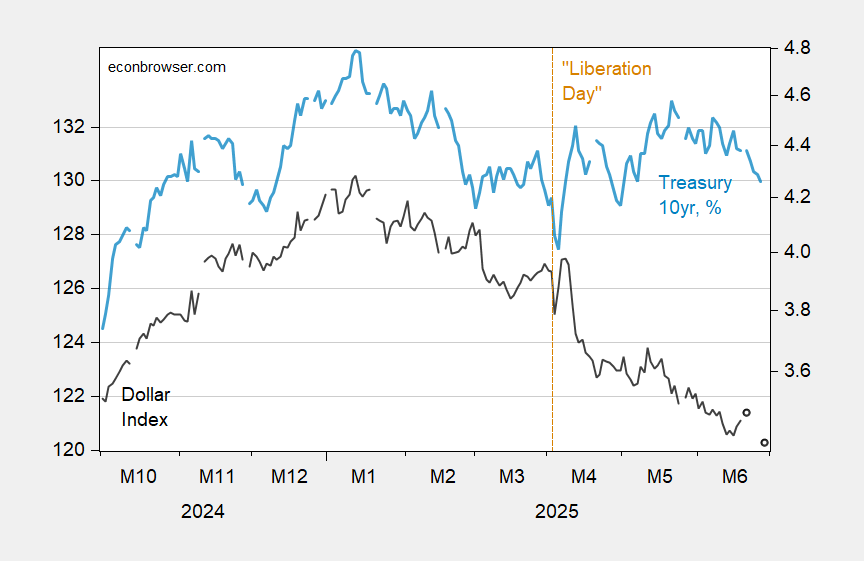Trump has indicated his desire for a weaker dollar. It looks like he’s getting it.

Figure 1: Fed broad dollar index, 2006M01=100 (black, left scale), Treasury 10 year, % (blue, right scale). June 27 observation for nominal dollar is estimated using observation on DXY. Source: Federal Reserve and Treasury.
The dollar has weakened, at certain points when the ten year yield has risen (suggesting an erosion of its safe haven status), and most recently has fallen with falling Treasury yields.
The broad dollar has depreciated about 7.6% from January 20th.
Bussiere, of Chiaie and Peltuonen (2014) estimate the long run pass through at about 0.35 for the United States, over the 1990-2011 period. Results from the earlier 2006 Fed survey, discussed here.
For the PPI for tradable industries, the pass-through estimate is about 0.3 for 2013-20 in Friend and al. (2022)but 0.7 for 2021, suggesting the pandemic era exhibits different behavior.
For consumer price indices, MATTSCHKE AND SATIRIJU (2022) argue dollar appreciation/depreciation has very little impact on PCE inflation. Pointing out that only about 10% of a core consumer basket involves imported goods.
This is useful to keep in mind insofar as an appreciating currency will not be offsetting upward price pressure arising from tariffs, in contrast to the 2018 experience. Given this, and an historically high effective tariff rate, the Fed should be concerned about inflationary pressures. (Of course, a sufficiently deep recession, which also seems to be in the Trump game plan, would obviate that worry.)

